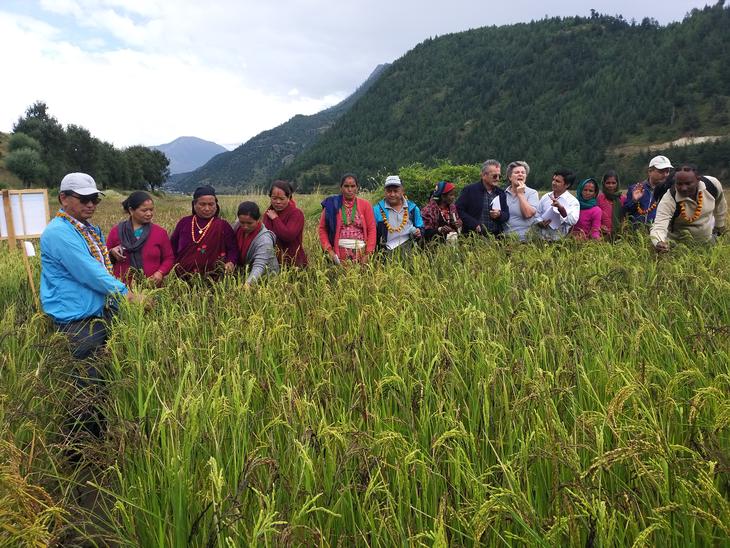
Option 7B
Develop participatory plant breeding programmes or projects.
Participatory plant breeding programs or projects are based on close collaboration between farmers and researchers at various stages of a breeding project or program. Farmers may thus contribute to setting breeding objectives, assembling parental materials, making crosses, selecting in early generations, testing and evaluating experimental varieties and, depending on how activities are set up, in the production and distribution of seed. Women and men may hold different knowledge and expertise in this regard, depending on the specific farming activities they engage in and the crops and varieties that the project or programme focusses on. Such differences may be carefully assessed and considered to ensure that women and men can equally benefit.
Through joint activities, both farmers and researchers may apply, share, deepen and enrich their knowledge and contribute to the development of varieties that respond to the needs and requirements of farmers and consumers or other market partners. Participatory plant breeding may also be a way to adapt the portfolio of varieties that are available to farmers to changing conditions, e.g. climate change.
In that farmers may use the varieties that are developed through such projects and programs, they can participate in sharing benefits arising from the utilization of PGRFA.
Example(s) of possible measures:
- Participatory plant breeding in Cuba (Cuba/Latin America and the Caribbean). Click here
- Farmer-breeder groups (Indonesia/Asia). Click here
- Increasing genetic diversity and realizing Farmers’ Rights through Evolutionary Participatory Plant Breeding (EPPB) (Iran/Near East). Click here
- Innovative decentralised seed systems for bread-wheat evolutionary populations (Italy/Europe). Click here
- Landrace enhancement (‘grassroots breeding’) (Nepal/Asia). Click here